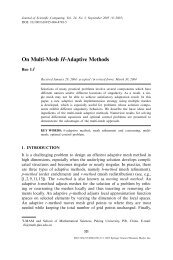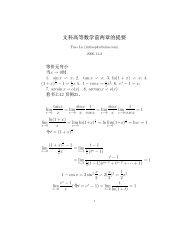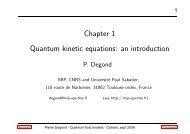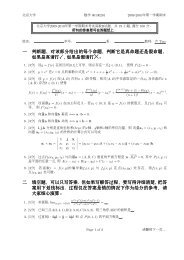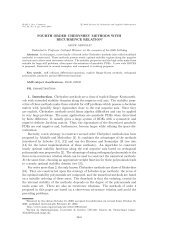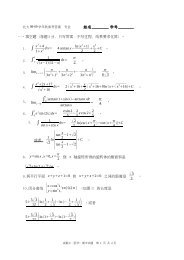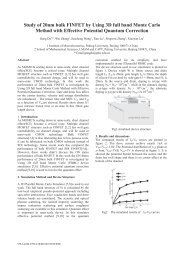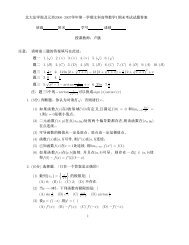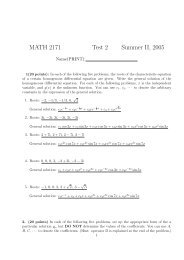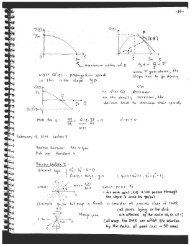Abstract
Abstract
Abstract
Create successful ePaper yourself
Turn your PDF publications into a flip-book with our unique Google optimized e-Paper software.
CHAPTER 3. BIFURCATION ANALYSIS 52<br />
lem by augmenting the nonlinear equation W ( f,V) you are solving for steady-state<br />
with a contrived parameter s (the arc-length parameter) and an additional arc-length<br />
equation. So the system we are solving now is<br />
W ( f(s),V(s)) = 0 (3.5)<br />
N( f(s),V(s),s) = 0 (3.6)<br />
where the first equation specifies that we are on a steady-state solution branch, and<br />
the second equation specifies the step to take in the parameter s. Suppose we have<br />
the point ( f 0 ,V 0 ) on the solution curve and the next solution point to be computed<br />
is ( f j ,V j ). For the next continuation step, the arc-length equation is given by<br />
N( f(s),V(s),s)= ∂ T<br />
f<br />
(<br />
∂s<br />
f − f 0 )+ ∂V<br />
∂s (V − V 0 ) − ∆s (3.7)<br />
A geometric interpretation of the ( f,V)-points that satisfy N( f(s),V(s),s)=0can<br />
be given. Suppose a, b ∈ R and (x0,y0) ∈ R 2 . It is a result from analytic geometry<br />
that the points (x, y) ∈ R 2 where a(x − x0) +b(y − y0) − c = 0 lie in the plane<br />
perpendicular to the vector (a, b) atadistance<br />
√ c<br />
a2 +b2 away from (x0,y0). Similarly,<br />
if ( f j ,V j ) satisfy the arc length equation, then the point will lie in the ( f,V)plane<br />
perpendicular to the gradient of ( f(s),V(s)), at some distance away from ( f 0 ,V 0 ),<br />
determined by the size of ∆s. An example of tracing a one dimensional system with<br />
a one dimensional parameter using pseudo arc-length continuation is given in Figure




